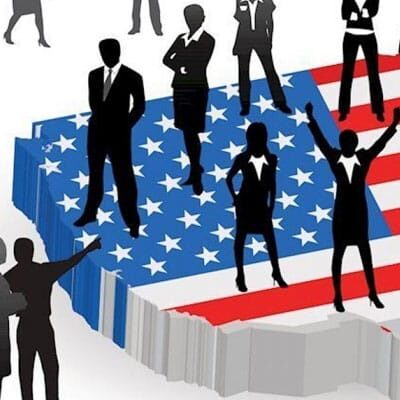Introduction Abou Future of work and creativity
The Future of work and creativity is a topic of intense scrutiny and speculation in an era of technological disruption and societal change. As automation reshapes industries and remote work becomes the norm, one factor emerges as paramount in determining success: creativity. The ability to innovate, think critically, and envision alternative solutions will be essential for individuals and organizations as they navigate the complexities of the modern workplace.
The Intersection of the Future of work and creativity
Defining Creativity in the Workplace
Creativity transcends traditional notions of artistic expression, encompassing problem-solving, critical thinking, and the ability to adapt to new challenges. In the work context, creativity involves generating novel ideas and the willingness to experiment and take risks. It catalyzes innovation, driving progress and differentiation in a rapidly changing world.
The Evolving Nature of Work
The nature of work is undergoing a profound transformation, fueled by advances in technology and shifts in societal expectations. From the rise of automation and artificial intelligence to the proliferation of remote work and the gig economy, traditional notions of employment are being redefined. In this evolving landscape, creativity emerges as a vital skill for individuals seeking to thrive in the future workplace.
Embracing Creativity in the Future Workplace
Cultivating a Creative Culture
Organizations must actively cultivate a culture that values and encourages creativity. This entails creating an environment where employees feel empowered to express their ideas and take risks without fear of judgment or reprisal. By fostering a culture of innovation, companies can unlock the full potential of their workforce and drive sustainable growth.
Nurturing Creativity Through Diversity and Inclusion
Diversity and inclusion are essential ingredients for fostering creativity in the workplace. By embracing individuals from diverse backgrounds and perspectives, organizations can tap into a wealth of experiences and insights that fuel innovation. Moreover, inclusive environments promote psychological safety, enabling employees to collaborate effectively and contribute their talents to the creative process.
Overcoming Challenges to Creativity
Addressing the Skills Gap
As the nature of work evolves, there is a growing mismatch between the skills demanded by employers and those possessed by workers. To bridge this gap, individuals must commit to lifelong learning and upskilling initiatives to remain competitive in the job market. Employers, in turn, must provide training and development opportunities that empower employees to adapt to changing demands and cultivate their creative abilities.
Prioritizing Mental Health and Well-being
Pursuing creativity can be taxing, often requiring individuals to push beyond their comfort zones and confront uncertainty. As such, organizations need to prioritize their employees’ mental health and well-being. This includes fostering a supportive work environment, promoting work-life balance, and offering resources and support for managing stress and burnout.
Strategies for Fostering Creativity
Encouraging Experimentation and Risk-taking
Creativity flourishes in environments that encourage experimentation and risk-taking. Organizations should create space for employees to explore new ideas, test hypotheses, and learn from failure. By embracing a culture of experimentation, companies can unleash the full potential of their workforce and drive innovation forward.
Leveraging Technology for Creative Collaboration
Technology is crucial in facilitating creative collaboration in today’s interconnected world. From virtual brainstorming sessions to collaborative design tools, digital platforms enable teams to work together seamlessly regardless of geographical location. By leveraging technology effectively, organizations can harness the collective intelligence of their workforce and drive creativity and innovation at scale.
Frequently Asked Questions (FAQs)
What is the future of work?
The future of work refers to anticipated changes like employment and the workplace resulting from technological advancements, societal shifts, and economic trends. This includes automation, remote work, gig economy, and evolving skill requirements.
Why is creativity important in the workplace?
Creativity is crucial in the workplace as it drives innovation, problem-solving, and differentiation. It allows individuals and organizations to adapt to change, envision new possibilities, and stay ahead in a competitive landscape.
How can organizations foster creativity among employees?
Organizations can foster creativity by cultivating a supportive culture that values experimentation, risk-taking, and diverse perspectives. Providing opportunities for training, collaboration, and recognition of creative efforts also plays a significant role.
What are the challenges to creativity in the workplace?
Challenges to creativity in the workplace include the skills gap, where there is a mismatch between the skills demanded by employers and those possessed by workers. Factors such as stress, burnout, and lack of diversity can also inhibit creative expression.
How can individuals enhance their creative abilities?
Individuals can enhance their creative abilities by engaging in activities stimulating their imagination, such as brainstorming, exploring new experiences, and seeking feedback from peers. Continuous learning and experimentation are also essential for personal growth and creativity.
Conclusion
As we stand on the precipice of a new era of work, one thing is sure: creativity will be a cornerstone of success in the future workplace. By embracing creativity as a strategic imperative and fostering environments that nurture innovation, individuals and organizations can navigate the complexities of the modern world with confidence and resilience. As we forge into an uncertain future, let us embrace the power of creativity to drive positive change and shape a world where innovation knows no bounds.


